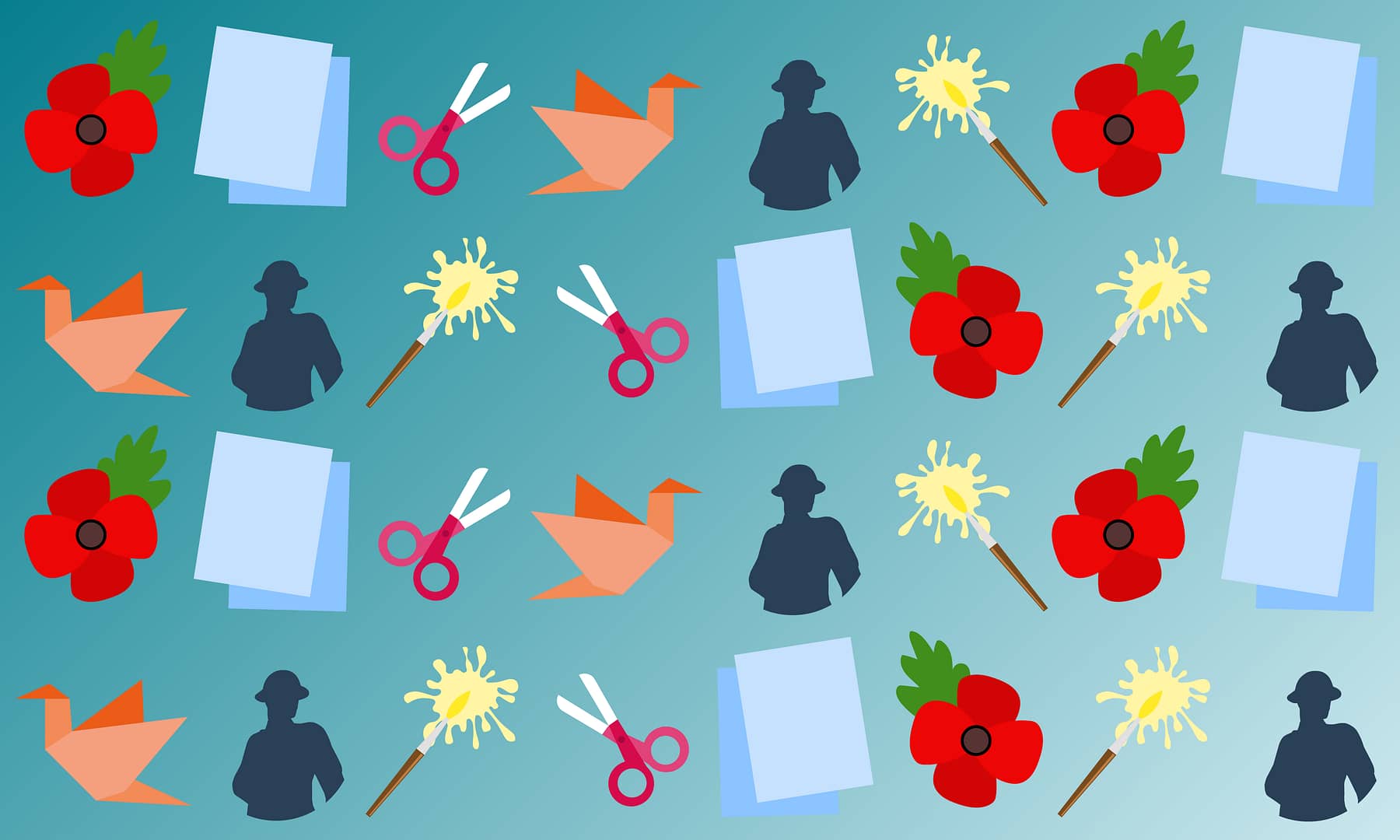Remembrance Day Arts And Craft Ideas For Primary Schools
Written by Kapow Primary's Art and Design Team
Published on 29th October 2024
Last Updated: 29th October 2024
Written by Kapow Primary's Art and Design Team
Published on 29th October 2024
Last Updated: 29th October 2024

Remembrance Day, also known as Armistice Day, offers a meaningful opportunity for pupils to engage with the themes of peace, remembrance, and hope. Through art, children can explore these powerful ideas while developing their creativity. Here are some engaging art activities for primary schools that commemorate Remembrance Day, each inspired by renowned artists or historical symbols of peace.
Age group: EYFS, KS1 or KS2
Linked artist: Georgia O’Keeffe – Poppies
Artist background: Georgia O’Keeffe is famous for her large, detailed paintings of flowers, including poppies, which can symbolise remembrance.
Learning objective: To use scale and detail in creating a wreath of poppies inspired by Georgia O’Keeffe’s flower paintings.
Activity:
Age group: EYFS, KS1 or KS2
Linked artist: Andy Goldsworthy – Environmental sculpture
Artist background: The British artist Andy Goldsworthy is known for using natural materials to create temporary art installations, often symbolising the passage of time and memory.
Learning objective: To use natural materials and create a shared installation that reflects memory and remembrance, inspired by Andy Goldsworthy.
Activity:
Age group: EYFS, KS1 or KS2
Linked artist: Joseph Cornell – Assemblage Art
Artist background: American artist Joseph Cornell was known for creating ‘memory boxes’ or assemblages using found objects, often representing moments in time, memory, and personal history.
Learning objective: To create a memory box inspired by Joseph Cornell, reflecting on remembrance through objects and personal symbolism.
Activity:
This KS2 Art & Design sculpture lesson plan is inspired by the work of Joseph Cornell.
Age group: KS1 or KS2
Linked artist: Pablo Picasso La Colombe (Dove) (1949)
Artist background: Picasso’s Dove of Peace became a universal symbol of hope and peace, particularly after World War II when it was featured on posters for the World Peace Congress in Paris.
Learning objective: To create a mosaic that represents peace, inspired by Picasso’s symbolic dove.
Activity:
Age group: KS1 or KS2
Linked craft: Islamic stained glass (from mosques and traditional design)
Craft background: Islamic architecture often features intricate stained-glass windows with geometric patterns. In many cultures, light shining through glass represents knowledge, reflection, and remembrance.
Learning objective: To design and create a stained-glass window that symbolises remembrance, inspired by the geometric patterns found in Islamic art.
Activity:
Age group: KS2
Linked artist: Faith Ringgold – (Story Quilts) or Harriet Powers
Artist background: Faith Ringgold is known for her story quilts that convey messages about peace, justice, and conflict.
Learning objective: To collaborate on a class banner, telling a collective story about peace, inspired by Faith Ringgold’s storytelling through art.
Activity:
Age group: KS2 (Years 5 & 6)
Linked artist: Paul Nash – The Menin Road (War Landscapes)
Artist background: Paul Nash was a British war artist whose dramatic landscapes, such as ‘The Menin Road’, depict the destruction of war.
Learning objective: To create a silhouette artwork using contrast and symbolism inspired by Paul Nash’s war landscapes.
Activity:
Age group: KS2 (Years 5 & 6)
Linked artist: Sadako Sasaki and the 1,000 Cranes (Origami Art)
Artist background:
Sadako Sasaki, a Hiroshima survivor, became a symbol of peace after folding 1,000 paper cranes while she was ill from radiation sickness. Now, the paper cranes represent peace, hope, and healing.
Learning objective: To use origami and lantern-making to create symbols of peace inspired by the story of Sadako Sasaki and the 1,000 cranes.
Activity:
Age group: KS2 (Years 5 & 6)
Linked artist: Kimiyo Mishima
Artist background:
Kimiyo Mishima was a Japanese artist who created sculptural installations that transformed everyday objects into symbols of memory and loss, exploring how life is fleeting and how memories are powerful.
Learning objective: To create a clay sculpture symbolising remembrance, inspired by Kimiyo Mishima’s exploration of memory through sculptural art.
Activity:
Remembrance Day is an important time for children to reflect on peace, memory, and the impact of conflict. These art activities provide a creative and thoughtful way for pupils to express these themes, helping them connect with the history of Remembrance Day while developing their artistic skills. Through these projects, children can honour the past while envisioning a peaceful future.